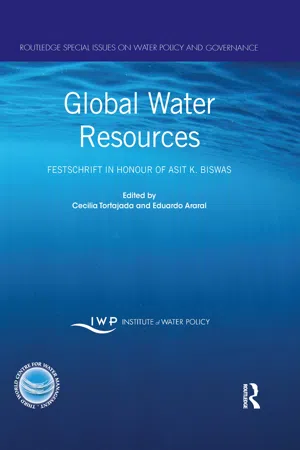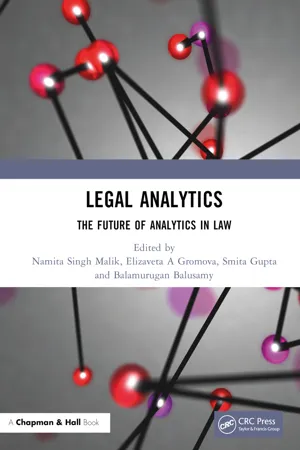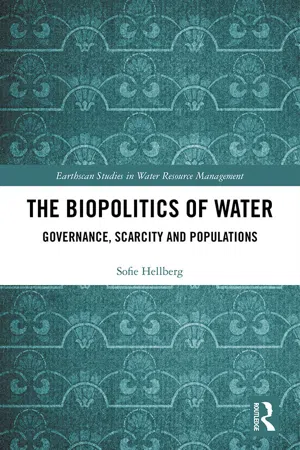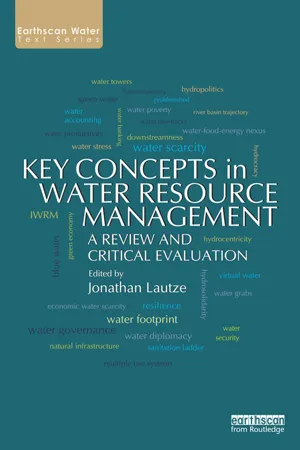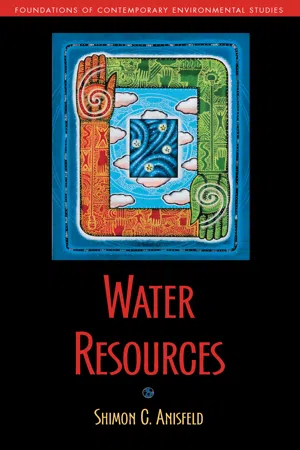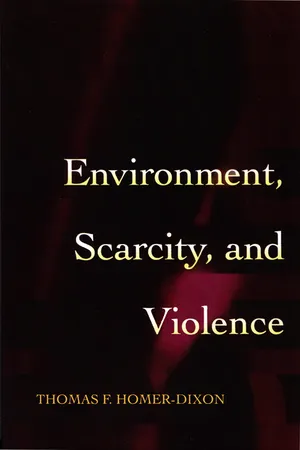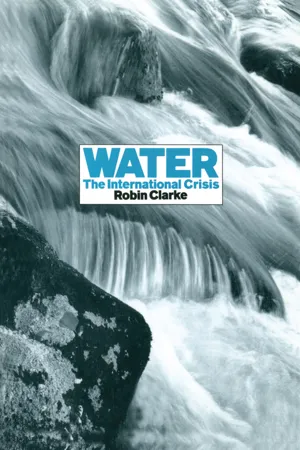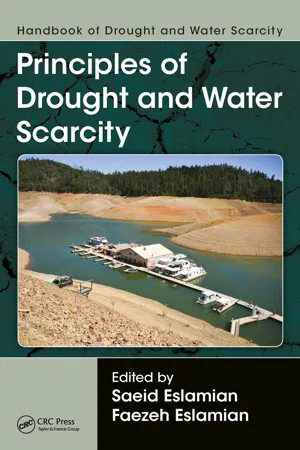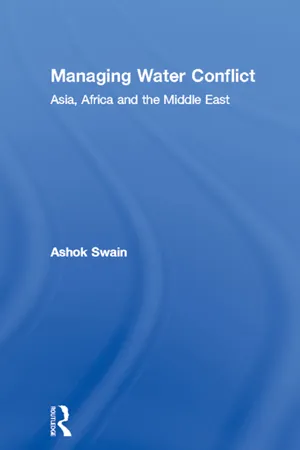Geography
Water Scarcity
Water scarcity refers to the lack of sufficient available water resources to meet the demands of a region. It is often caused by a combination of factors including population growth, climate change, and inefficient water management. Water scarcity can lead to environmental degradation, economic challenges, and social conflicts, making it a critical issue for many regions around the world.
Written by Perlego with AI-assistance
Related key terms
Related key terms
1 of 4
Related key terms
1 of 3
12 Key excerpts on "Water Scarcity"
- eBook - ePub
Global Water Resources
Festschrift in Honour of Asit K. Biswas
- Cecilia Tortajada, Eduardo Araral(Authors)
- 2021(Publication Date)
- Routledge(Publisher)
Dore, 2005 ). Big cities all over the world are now experiencing recurring water shortages. Sao Paulo in Brazil, Jakarta in Indonesia, Bangalore in India and Cape Town in South Africa are just some of the cities that recently made international headlines due to water shortages.By definition, Water Scarcity is a general state of water insufficiency. Water stress is defined as a state when certain threshold values are exceeded (Hanasaki, Yoshikawa, Pokhrel, & Kanae, 2018a ). Water Scarcity was further classified by Rijsberman (2006 ) into two different types: physical and economic. Physical Water Scarcity is the insufficiency or lack of water itself. This type of scarcity is often found in arid regions. Economic Water Scarcity is an insufficiency of water associated with lack of capacity to use water resources despite its availability or abundance. Economic Water Scarcity is often associated with inadequate infrastructure development and poor management, as well as cases of inequitable water allocation and access across economic levels. Access to safe drinking water tends to improve with economic growth. The achievement of the Millennium Development Goal for drinking water (Target 7-C) was associated with the rapid economic growth in China and India in 1990–2015 (Fukuda, Noda, & Oki, 2019 ).Although supply and demand are the fundamental factors dictating water stress, economic forces interfere and alter the dynamics of these two. Standard of living changes water use behaviours; richer economies tend to use more water per capita. On the supply side, the capacity for building utility infrastructure also correlates with economic stature. Inter-basin transfers, groundwater extraction and seawater desalination are just some of the common alternatives to conventional water supply, which are all undeniably capital-intensive. Also, the urbanization process, along with the distribution and growth of population in megacities, is different in developed and developing economies (Biswas, 2004 ). Megacities in developing countries grow exponentially faster than their developed and industrialized counterparts. But the magnitude of economic development is concurrent with population growth only in industrialized cities, leaving developing cities behind (Varis et al., 2006 ). The importance of water resource management in alleviating water stress, especially in cases of economic Water Scarcity in developing countries, was highlighted by Biswas and Tortajada (2010a , 2010b). In their case study of Phnom Pehn, Cambodia, the drastic improvement in public access to water since institutional restructuring has demonstrated that effective leadership and governance can alleviate Water Scarcity (Biswas & Tortajada, 2010b - eBook - ePub
Legal Analytics
The Future of Analytics in Law
- Namita Singh Malik, Elizaveta A Gromova, Smita Gupta, Balamurugan Balusamy, Namita Singh Malik, Elizaveta A Gromova, Smita Gupta, Balamurugan Balusamy(Authors)
- 2022(Publication Date)
- Chapman and Hall/CRC(Publisher)
1999 ).Water Scarcity may be either physical (absolute) or economical. If the natural resources of water are out of the reach of a particular community, area, or region and cannot meet the requirement, then it is called “physical Water Scarcity”. While, on the other hand, if the Water Scarcity was due to poor management of water resources and lack of technology and investment, then it is economic Water Scarcity (Anonymous ).Demonstrating the global accessibility to water and the most crucial areas, Figure 9.1 presents the picture of the present world full of obstacles in the form of a lack of safe drinking water, which excessively affects inhabitants worldwide enormously (Figure 9.2 ).FIGURE 9.1 Global accessibility to water.FIGURE 9.2 Expected Water Scarcity in 2025 in different ways.Source: Third World Academy of Sciences. (TWAS 2002 ).In the coming decades, the Earth will consist of the same level of water as it contains at present; however, the global population over the following decades is projected to grow, which will also increase additional demand for drinking water. At present, the global scheme of development is neither desirable nor sustainable. Considering the future. Indeed, the current situation regarding accessibility and availability of safe drinking water will prove a bigger obstacle in the coming years if serious and instant efforts are not taken soon (UNESC 2003 ).A further serious obstacle that the world is tackling is common water resources. The need of human beings is causing water shortages. Pollution of the environment and water sources is leading to environmental collapse at a wider level in the common area. This creates conflicts between basic human needs and social development, the environment, its biodiversity, and economic growth, such as industrial development. Here, another significant issue is states sharing common water resources (UNESC 2003 ). Measures have to be taken towards the present issue by recycling, storing, and consuming water, and a more sustainable way of doing this has to be recognized. Besides tools for sanitation, access to water is essential to reduce the huge lack that currently is affecting a large amount of the global population negatively, in the form of health issues, which frequently lead to death (Twas 2002 - eBook - ePub
The Biopolitics of Water
Governance, Scarcity and Populations
- Sofie Hellberg(Author)
- 2018(Publication Date)
- Routledge(Publisher)
Unsustainable development pathways and governance failures have generated immense pressures on water resources, affecting its quality and availability, and in turn compromising its ability to generate social and economic benefits. The planet’s capacity to sustain the growing demands for freshwater is being challenged, and there can be no sustainable development unless the balance between demand and supply is restored.(WWDR, 2015, p. 10)Different notions and measurements of Water Scarcity are used to describe the state of freshwater resources globally. One way of expressing the differences between different types of scarcity is to distinguish between physical, economic, and institutional Water Scarcity. Physical scarcity is when water is limited in quantity or quality. Globally, it is estimated that about 700 million people in 43 countries are presently in a state of water stress or scarcity. This is predicted to extend to more than 2.8 billion people in 48 countries by 2025 (GWI, 2013, p. 3).2 In contrast, economic scarcity depicts a situation where lack of infrastructure is the reason that water does not reach users, while institutional scarcity describes a situation where the lack of capacity and institutional framework is the reason that reliable access to water cannot be ensured (FAO, 2016). In 2007 it was estimated that about 1.8 billion people suffered from economic Water Scarcity (UN Water, 2007).3In terms of physical Water Scarcity, countries are commonly divided into the following groups: water-stressed countries (when the annual water supply drops below 1,700 m3 per person); Water Scarcity (when the annual water supply drops below 1,000 m3 per person); and absolute scarcity (when the annual water supply drops below 500 m3 - eBook - ePub
Key Concepts in Water Resource Management
A Review and Critical Evaluation
- Jonathan Lautze(Author)
- 2014(Publication Date)
- Routledge(Publisher)
Building on broader notions in natural resources scarcity and the related focus on sustainability (WCED, 1987), interest in the scarcity of water intensified in the 1990s and 2000s. Reviewing literature on Water Scarcity reveals two common definitions. The first definition of Water Scarcity is as follows (Rijsberman, 2006; IWMI-CA, 2007; Chartres and Varma, 2011):When an individual does not have access to safe and affordable water to satisfy her or his needs for drinking, washing or their livelihoods we call that person water insecure. When a large number of people in an area are water insecure for a significant period of time, then we can call that area water scarce.The second definition, which may be more consistent with broader notions of resources scarcity, is as follows (UN-Water, 2006; UN-Water and FAO, 2007):[Water Scarcity is] the point at which the aggregate impact of all users impinges on the supply or quality of water under prevailing institutional arrangements to the extent that the demand by all sectors, including the environment, cannot be satisfied fully.The first definition marks an important way to reflect the water limitations faced in many parts of the world. It is straightforward and intuitive: if people lack access to water in a region, that region is water scarce. The definition nonetheless fails to distinguish whether lack of access to water results from: i) mismanagement, infrastructure limitations or lack of investments, or ii) limitations of water itself. The second definition presents a more nuanced, yet somewhat more esoteric, interpretation of the Water Scarcity concept. It considers scarcity to occur when demand for water exceeds the supply of water. While the definition is carefully worded and conceptually sound, it is nonetheless unclear about certain details necessary for application of this concept; namely, i) how water supply and water demand are to be determined, and ii) thresholds associated with degrees of scarcity, which are critical because water’s public good nature and lack of price mean that water demand is likely to always be greater than supply. - eBook - ePub
- Daniel H. Chen, Daniel H. Chen(Authors)
- 2016(Publication Date)
- CRC Press(Publisher)
It is estimated that greater than 70% of the Earth’s surface is covered by water, but only 2.5% is freshwater. Approximately 70% of that freshwater is trapped in the ice caps of Antarctica and Greenland, with most of the remaining present as soil moisture, or lying deep in underground aquifers as groundwater, which is not readily accessible for human use. Less than 1% of the world’s freshwater is accessible for direct human uses and is obtained from lakes, rivers, reservoirs, and underground sources, which are readily accessible. Only this amount is regularly renewed by rain and snowfall, and is therefore available on a sustainable basis (Gleick 2000).Water Scarcity affects every continent and approximately 1.2 billion people (one-fifth of the world’s population) live in areas of physical scarcity, with a further 0.5 billion approaching the same situation. It is estimated that around 1.6 billion people are facing an economic water shortage where there is a lack of the necessary infrastructure to take water from rivers and aquifers (Figure 9.1 ). The term water stress is used when the annual water supplies drop below 1700 m3 per person; the term scarcity is used when annual supplies are below 1000 m3 per person, and the term absolute scarcity refers to resources below 500 m3 per person per annum. Water Scarcity is one of the main problems to be faced by mankind in this century. Water use is growing at more than twice the rate of population increase. There is enough water on Earth for everyone, but it is not evenly distributed and an increasing number of regions are chronically short of water. Much of the freshwater resource is not managed properly and is wasted or polluted. Water Scarcity, poor water quality, and the absence of appropriate sanitation negatively affect food security for the poor people of the world. These will also affect lifestyle and livelihood choices, as well as educational opportunities.FIGURE 9.1 Global physical and economic Water Scarcity. (Reprinted with permission from United Nations, International Decade for Action, Water for Life 2005–2015, Water Scarcity, 2014.)Water challenges can only increase significantly in the coming years because of population growth and the associated demand for better quality of life. According to the UNESCO World Water Development Report, by 2050, at least one in four people are likely to live in a country affected by chronic or recurring shortages of freshwater (UNESCO 2014). - eBook - ePub
Urban Water Crisis and Management
Strategies for Sustainable Development
- Sughosh Madhav, Abhishek Kumar Bhardwaj, Eugenia Valsami-Jones, Arun Lal Srivastav(Authors)
- 2022(Publication Date)
- Elsevier(Publisher)
The annual per capita availability of water more than 1700 m 3 indicates no stress condition. Between 1000 and 1700 m 3 is stress condition, and less than 500 m 3 is condition of absolute scarcity (Ray and Shaw, 2019). Vörösmarty et al. (2010) brought both physical and socio-economic dimensions into consideration while defining Water Scarcity. The Centre for Ecology and Hydrology (CEH), Wallingford developed the Water Poverty Index (WPI) (Caroline, 2002 ; Lawrence et al., 2002) and found a link between socio-economic conditions and Water Scarcity issues. According to the Food and Agriculture Organization of the United Nations (Steduto et al., 2012), there are three main scopes (Mallick and Roldan-Rojas, 2015) of water security: (i) scarcity in availability of adequate water quality; (ii) scarcity due to the absence of acceptable infrastructure owing to technical, financial, or other constraints irrespective of the level of water resources; and (iii) scarcity to access water services, owing to institutional failure to safeguard consistent, safe, and unbiased supply of water to users. Access to safe water is dependent on social factors, such as knowledge of basic cleanliness or social tiered position (Donohue et al., 2005). Households with low income might not have access to safe water owing to the cultural norms or societal differences (Sarkar, 2021 ; Mallick et al., 2011), or households with high-income may be reluctant to share safe water sources with households of lower income. Henceforth, Water Scarcity is also the result of numerous situations of the instability of water management, social, economic, and political conditions (Fig. 14.3). Fig. 14.3 Components affecting Water Scarcity. Megacities are inclined toward scarcity of water owing to increased urbanization and reduced access to fresh water - eBook - ePub
- Shimon C. Anisfeld(Author)
- 2011(Publication Date)
- Island Press(Publisher)
demand hardening. Cooley et al. (2007), however, argue that conservation measures do not preclude emergency measures during drought (such as behavioral changes and implementation of even better technologies) and can even provide more of a buffer against drought by increasing the normal operating water levels in reservoirs and aquifers.One advantage that water managers have in the struggle against drought is that any given drought is usually limited geographically. For example, it would be highly improbable for all of the agricultural areas of the US to be suffering from drought in the same year. As a result, average agricultural productivity across the entire country is relatively insensitive to the effects of drought. For smaller countries, this may mean relying more on food imports or food aid during drought years.5.5 ConclusionIn this chapter, we began to explore various aspects of Water Scarcity, including definitions of scarcity, the geographic extent of current scarcity, groundwater overdraft, and droughts. It should be clear at this point that human populations are distributed very unevenly with respect to available water. Some areas are already suffering from not having sufficient water to meet all human and ecosystem demands. This critical issue will dominate much of the rest of the book, as we examine specific aspects of scarcity and ways to better manage this problem.Solutions to water-scarcity problems generally fall into three categories:• Increase supply: This is the traditional response to Water Scarcity: build new infrastructure to capture, store, transport, and deliver more water. Although these tools still have a place, especially in the least developed countries, we are now much more aware of the shortcomings of large infrastructure projects. Are there other, more sustainable ways to increase supply? We discuss some alternatives in Chapter 7 - eBook - ePub
- Thomas F. Homer-Dixon(Author)
- 2010(Publication Date)
- Princeton University Press(Publisher)
The possibility of greenhouse-induced climate change introduces some uncertainty into these estimates, because climate change would shift precipitation patterns and therefore the overall water supply. Some arid regions—especially in coastal areas—might no longer face water shortages, whereas other, predominantly interior regions could suffer prolonged drought. Despite this uncertainty, the Middle East and parts of Africa are of particular concern with respect to Water Scarcity: these regions’ populations are still expanding rapidly, and water is already extremely scarce. 77 Taking the world as a whole, the number of people living in countries with water stress or chronic Water Scarcity in 1997 was about 430 million; by the year 2025, using the UN’s medium population projections, the number is expected to rise to 3 billion, or over a third of the planet’s population (using the low projections, the figure is 2 billion). 78 Water has long been a source of contention among certain groups and societies. Some experts suggest that international disputes over river water, in particular, could become more frequent in coming decades. For instance, the Nile River runs through nine countries, and downstream nations—especially Egypt and the Sudan—are vulnerable to upstream water diversion because of their dry climates and dependence on irrigated agriculture. Other African rivers are shared by several countries; for example, the Zambezi and the Niger flow through eight and ten countries respectively, and the Senegal has been at the center of a serious clash between Mauritania and Senegal (as we shall see in the next chapter). Depletion of aquifers may also be a source of disputes: Egypt and Libya, for example, see the shared Nubian aquifer as a vital future source of water for huge agricultural zones - eBook - ePub
Water
The International Crisis
- Robin Clarke(Author)
- 2013(Publication Date)
- Routledge(Publisher)
A shortage of water is not the same as drought. Droughts are exceptional meteorological events. Water shortage in much of Africa – and elsewhere – is not exceptional but endemic, a part of everyday life. The central thesis of this book is that many countries, and not only those in Africa, are now chronically short of water. Most of them are likely to become more so in the future.While the symptoms of water shortage are easy to identify, its causes are not. Malin Falkenmark, from Stockholm’s Natural Science Research Council, distinguishes four different causes of Water Scarcity:- aridity, a permanent shortage of water caused by a dry climate;
- drought, an irregular phenomenon occurring in exceptionally dry years;
- dessication, a drying-up of the landscape, particularly the soil, resulting from activities such as deforestation and over-grazing; and
- water stress, due to increasing numbers of people relying on fixed levels of run-off.
The first two of these relate to the climate, the second two to changes that result from human activity. For the moment, it matters little which of these causes is the most important, and which results in the greatest suffering. Suffice that, jointly or separately, they are depriving millions of people of the water they need to live anything approaching a decent life.Water shortages are also a potential problem in many developed countries. However, industrial nations can usually resort to buying their way out: through the use of expensive energy, expensive technology and expensive investments they can install the wherewithal to recycle their water, or even to desalinate sea water.Developing countries, trapped in poverty and debt, have no such option. Those that suffer from serious water shortages are faced with a cruel dilemma: they must either limit their use to water that has not previously been used; or they must make do with used but untreated water.There are few meaner examples of Hobson’s choice. To choose to limit water use can prevent progress, reduce food production, threaten livestock production and imperil human survival. To choose to reuse untreated water, on the other hand, is an open invitation to disease.1 - eBook - ePub
Economics of the Middle East
Development Challenges
- Julia C Devlin(Author)
- 2016(Publication Date)
- WSPC(Publisher)
Chapter 4
Water Scarcity in the MENA Region
Managing water resources pose significant challenges for policymakers globally — the amount of water readily available for human use is less than 1% of total water resources in the world.Water resource scarcity is particularly severe in the Middle East and North Africa (MENA) — the most water “poor” region in the world where per capita water resources have declined by 60% since the 1970s. In Yemen, for example, groundwater tables in the Sana’a Basin are falling by as much as 6 m per year and government officials are considering moving the location of Sana’a, the capital city.This chapter surveys underlying factors driving Water Scarcity in the MENA region and explores policy approaches to more sustainable water management. Section I discusses rising Water Scarcity in the context of the MENA region and underlying contributing factors. Section II explores policy approaches to more sustainable water resource management with a focus on specific countries in the region.•Water is a renewable resource but finite.The amount of water readily available for human use is less than 1% of total water resources in the world.1II. Water Scarcity in the MENA Region2
•In the MENA region, ensuring access to freshwater resources for activity and human welfare is particularly challenging. Globally, between 1950 and 2030, it is estimated that per capita water resources will decline by 60%. In the MENA region, water resources per capita have already declined by 60% since the 1960s. - eBook - ePub
Handbook of Drought and Water Scarcity
Principles of Drought and Water Scarcity
- Saeid Eslamian, Faezeh A. Eslamian(Authors)
- 2017(Publication Date)
- CRC Press(Publisher)
The working group has also given guidelines for drought management planning at different levels [ 101 ]. The recommendations of the expert group have led to the development of European drought observatory as well as integration of drought preparedness planning as part of the normal water resources planning in many countries [ 20 ]. In addition to this, EU has funded many research programs studying the Water Scarcity and droughts in Europe that provide valuable information and guidelines to policy making and water management (e.g., ARIDE [ 15 ] and MEDROPLAN [ 47 ]). 32.6 Summary and Conclusions In this chapter, the multidimensional aspects of Water Scarcity and droughts have been reviewed with several examples from Europe and Africa showing how the intertwined environmental, historical, and societal factors drive these phenomena. The impacts of the water disasters on societies vary spatially depending, above all, on the socially constructed vulnerability, resilience, and adaptive capacity of the affected societies. Due to their multidimensionality, many key concepts still lack clear and universal definitions accepted by all disciplines. However, this should not act as a barrier to increasing cooperation and action between the academics, policy makers, international organizations, and the public. The relation between Water Scarcity and poverty has been considered increasingly by the international community and particularly by the UN agencies and broadly addressed, for example, by the MDGs and new SDGs that set targets to 2030. International cooperation is becoming even more important in the face of the human-induced global environmental change, which is currently the main driving force of the water stress globally. Climate change together with additional pressures from the mismanagement of water and land resources is accelerating the pressures over the scarce available resources - eBook - ePub
Managing Water Conflict
Asia, Africa and the Middle East
- Ashok Swain(Author)
- 2004(Publication Date)
- Routledge(Publisher)
Because of rapidly increasing demand, developing countries in the arid and tropical regions are especially vulnerable to Water Scarcity. Furthermore, many of these states are characterized by strong ethnic identities, inefficient administration and a weak economy. Thus, it is logical that many observers expect water to become a key issue in disputes, conflicts or even wars in the future. Such developments might mean that technical solutions are impeded by political problems, and the water situation deteriorates even further. This is one possible scenario for the future. Others might be more optimistic by pointing to the ability of finding solutions, which are both social and technical.WATER AS THE SOURCE OF CONFLICT
The scarcity of water is increasing worldwide and the quality of the water is continually deteriorating. The growing global water stress poses a threat to the survival and prosperity of present and future generations. The gap between the needs of the growing population and the diminishing fresh water resources is widening every day. In the arid and tropical regions, where countries possess a very limited supply of water, it is not difficult to perceive the consequences. Water, a key necessity of life, can also cause friction between communities and countries, particularly in climatic zones where it is hard to come by.As Figure 1.1 suggests, population growth combined with hasty industrialization, huge urbanization and increasing agricultural activities will add to the demand for water resources as well as pollute the supply of water. The over-exploitation of water resources might result in an acute shortage. From this perspective, it will be impossible for all the social actors to remain comfortable with the present or future prospects of the availability of the resource. These actors will work purposefully and consciously for their own interests. IncreasingFigure 1.1 Increasing Demand Over Water and Creation of Conflicting Actorscompetition can potentially destroy the existing social arrangements for water distribution in the society. Newly organized actors with conflict behaviours might emerge in the future or the incompatibilities between existing actors might grow in societies with a weak administrative structure and laden with ethnic and social dichotomies.
Index pages curate the most relevant extracts from our library of academic textbooks. They’ve been created using an in-house natural language model (NLM), each adding context and meaning to key research topics.
Explore more topic indexes
Explore more topic indexes
1 of 6
Explore more topic indexes
1 of 4
